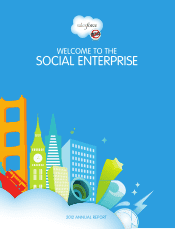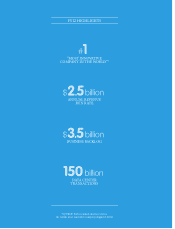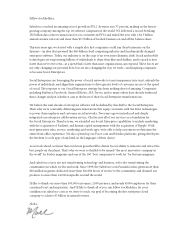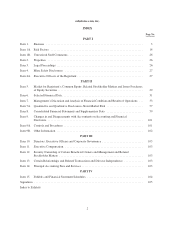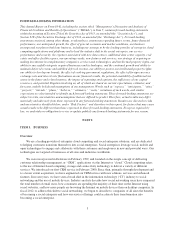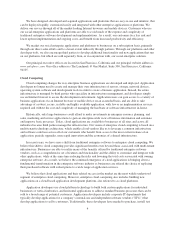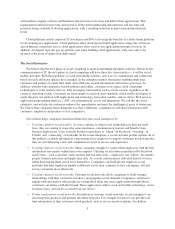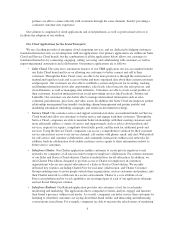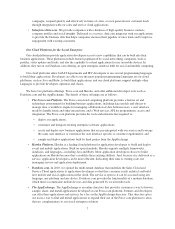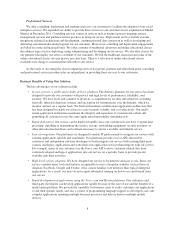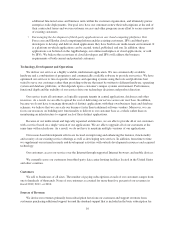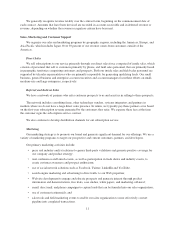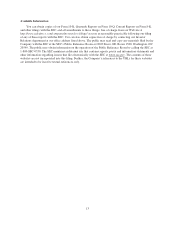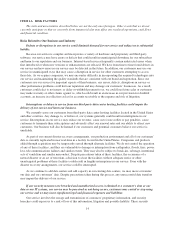Salesforce.com 2012 Annual Report Download - page 8
Download and view the complete annual report
Please find page 8 of the 2012 Salesforce.com annual report below. You can navigate through the pages in the report by either clicking on the pages listed below, or by using the keyword search tool below to find specific information within the annual report.We have designed, developed and acquired applications and platforms that are easy-to-use and intuitive, that
can be deployed rapidly, customized easily and integrated with other enterprise applications or platforms. We
deliver our service through all of the market-leading Internet browsers and mobile devices. Customers who use
our social enterprise applications and platforms are able to avoid much of the expense and complexity of
traditional enterprise software development and implementations. As a result, our customers face less risk and
lower upfront implementation and ongoing costs, and benefit from increased productivity and efficiency.
We market our social enterprise applications and platforms to businesses on a subscription basis, primarily
through our direct sales efforts and to a lesser extent indirectly through partners. Through our platforms and other
developer tools, we also encourage third parties to develop additional functionality and new applications that run
on our platforms, but which are sold separately from, or in conjunction with, our social enterprise solution.
Our principal executive offices are located in San Francisco, California and our principal website address is
www.salesforce.com. Our office address is The Landmark @ One Market, Suite 300, San Francisco, California
94105.
Cloud Computing
Cloud computing changes the way enterprise business applications are developed and deployed. Application
developers no longer need to create and manage their own infrastructure of servers, storage, network devices,
operating system software and development tools in order to create a business application. Instead, the entire
infrastructure is managed by third parties who specialize in infrastructure management, and developers simply
use an Internet browser to access the development environment. Application users can gain access to a variety of
business applications via an Internet browser or mobile device on an as-needed basis, and are able to take
advantage of a robust, secure, scalable and highly available application, with few or no implementation services
required and without the cost and complexity of managing the hardware or software infrastructure in-house.
Historically, only large businesses could afford to make investments in enterprise resource planning, and
sales, marketing and service applications to gain an enterprise-wide view of business information and automate
and improve basic processes. Today, cloud applications are available to businesses of all sizes and across all
industries because third parties manage the infrastructure. Our vision of enterprise cloud computing is based on a
multi-tenant technology architecture, which enables cloud vendors like us to leverage a common infrastructure
and software code base across all of our customers who benefit from access to the most current release of an
application, periodic upgrades, more rapid innovation and the economies of a shared infrastructure.
In recent years, we have seen a shift from traditional enterprise software to enterprise cloud computing. We
believe this shift to cloud computing provides significant benefits even beyond those associated with multi-tenant
infrastructure. Businesses are able to realize many of the benefits offered by traditional enterprise software
vendors, such as a comprehensive set of features and functionality and the ability to customize and integrate with
other applications, while at the same time reducing the risks and lowering the total costs associated with owning
enterprise software. As a result, we believe the continued emergence of cloud applications is bringing about a
fundamental transformation in the enterprise software industry as businesses are offered the choice of replacing
their purchased software with subscriptions to a wide range of application services.
We believe that cloud applications and their related success in the market are the most widely understood
segment of enterprise cloud computing. However, enterprise cloud computing also includes building new
applications on a cloud-based application development platform, also referred to as cloud platforms.
Application developers use cloud platform technology to build both custom applications for individual
businesses or vertical industries, and horizontal applications to address standard business processes that can be
sold to a broad range of potential customers. Application developers include corporate IT departments that
typically develop applications for a company’s internal-use and independent software vendors (“ISVs”) that
develop applications to sell to customers. Traditionally, these developers have needed to purchase, install, test
4

